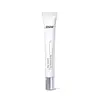What's inside
What's inside
 Key Ingredients
Key Ingredients

 Benefits
Benefits

 Concerns
Concerns

No concerns
 Ingredients Side-by-side
Ingredients Side-by-side

Water
Skin ConditioningGlycerin
HumectantButylene Glycol
HumectantPentylene Glycol
Skin ConditioningPolymethylsilsesquioxane
1,2-Hexanediol
Skin ConditioningCaffeine
Skin ConditioningBetaine
HumectantCaprylic/Capric Triglyceride
MaskingC13-16 Isoparaffin
SolventHydroxyethyl Acrylate/Sodium Acryloyldimethyl Taurate Copolymer
Emulsion StabilisingCaprylyl Methicone
Skin ConditioningCetearyl Alcohol
EmollientPanthenol
Skin ConditioningPhenyl Trimethicone
Skin ConditioningVinyldimethicone
Ammonium Acryloyldimethyltaurate/Vp Copolymer
C12-14 Isoparaffin
SolventGossypium Herbaceum Extract
Skin ConditioningHydroxyacetophenone
AntioxidantCarbomer
Emulsion StabilisingTromethamine
BufferingCitric Acid
BufferingAdenosine
Skin ConditioningSodium Citrate
BufferingDisodium EDTA
Hydrolyzed Hyaluronic Acid
HumectantNiacinamide
SmoothingTocopheryl Acetate
AntioxidantDextrin
AbsorbentTheobroma Cacao Seed Extract
AntioxidantGluconolactone
Skin ConditioningSodium Benzoate
MaskingCalcium Gluconate
HumectantWater, Glycerin, Butylene Glycol, Pentylene Glycol, Polymethylsilsesquioxane, 1,2-Hexanediol, Caffeine, Betaine, Caprylic/Capric Triglyceride, C13-16 Isoparaffin, Hydroxyethyl Acrylate/Sodium Acryloyldimethyl Taurate Copolymer, Caprylyl Methicone, Cetearyl Alcohol, Panthenol, Phenyl Trimethicone, Vinyldimethicone, Ammonium Acryloyldimethyltaurate/Vp Copolymer, C12-14 Isoparaffin, Gossypium Herbaceum Extract, Hydroxyacetophenone, Carbomer, Tromethamine, Citric Acid, Adenosine, Sodium Citrate, Disodium EDTA, Hydrolyzed Hyaluronic Acid, Niacinamide, Tocopheryl Acetate, Dextrin, Theobroma Cacao Seed Extract, Gluconolactone, Sodium Benzoate, Calcium Gluconate
Water
Skin ConditioningMethylpropanediol
SolventNiacinamide
SmoothingPanthenol
Skin ConditioningCaffeine
Skin Conditioning1,2-Hexanediol
Skin ConditioningRosa Centifolia Flower Water
Skin ConditioningSodium Polyacrylate
AbsorbentHydroxyacetophenone
AntioxidantChlorphenesin
AntimicrobialAllantoin
Skin ConditioningSynthetic Fluorphlogopite
Butylene Glycol
HumectantCI 77891
Cosmetic ColorantVaccinium Macrocarpon Fruit Extract
AstringentIngredients Explained
These ingredients are found in both products.
Ingredients higher up in an ingredient list are typically present in a larger amount.
1,2-Hexanediol is a synthetic liquid and another multi-functional powerhouse.
It is a:
- Humectant, drawing moisture into the skin
- Emollient, helping to soften skin
- Solvent, dispersing and stabilizing formulas
- Preservative booster, enhancing the antimicrobial activity of other preservatives
Butylene Glycol (or BG) is used within cosmetic products for a few different reasons:
Overall, Butylene Glycol is a safe and well-rounded ingredient that works well with other ingredients.
Though this ingredient works well with most skin types, some people with sensitive skin may experience a reaction such as allergic rashes, closed comedones, or itchiness.
Learn more about Butylene GlycolCaffeine is most associated with coffee, tea, and cacao. In skincare, it helps with calming inflammation and is rich in antioxidants.
While caffeine is used to treat cellulite and and dark circles, further studies are needed to prove this. It has been believed to help with these skin conditions due to its ability to dilate blood vessels and increase blood flow.
Some studies are looking into caffeine's ability to protect against UV rays.
Learn more about CaffeineHydroxyacetophenone is antioxidant with skin conditioning and soothing properties. It also boosts the efficiency of preservatives.
This ingredient is not irritating or sensitizing.
Niacinamide is a multitasking form of vitamin B3 that strengthens the skin barrier, reduces pores and dark spots, regulates oil, and improves signs of aging.
And the best part? It's gentle and well-tolerated by most skin types, including sensitive and reactive skin.
You might have heard of "niacin flush", or the reddening of skin that causes itchiness. Niacinamide has not been found to cause this.
In very rare cases, some individuals may not be able to tolerate niacinamide at all or experience an allergic reaction to it.
If you are experiencing flaking, irritation, and dryness with this ingredient, be sure to double check all your products as this ingredient can be found in all categories of skincare.
When incorporating niacinamide into your routine, look out for concentration amounts. Typically, 5% niacinamide provides benefits such as fading dark spots. However, if you have sensitive skin, it is better to begin with a smaller concentration.
When you apply niacinamide to your skin, your body converts it into nicotinamide adenine dinucleotide (NAD). NAD is an essential coenzyme that is already found in your cells as "fuel" and powers countless biological processes.
In your skin, NAD helps repair cell damage, produce new healthy cells, support collagen production, strengthen the skin barrier, and fight environmental stressors (like UV and pollution).
Our natural NAD levels start to decline with age, leading to slower skin repair, visible aging, and a weaker skin barrier. By providing your skin niacinamide, you're recharging your skin's NAD levels. This leads to stronger, healthier, and younger looking skin.
Another name for vitamin B3 is nicotinamide. This vitamin is water-soluble and our bodies don't store it. We obtain Vitamin B3 from either food or skincare. Meat, fish, wheat, yeast, and leafy greens contain vitamin B3.
The type of niacinamide used in skincare is synthetically created.
Learn more about NiacinamidePanthenol is a common ingredient that helps hydrate and soothe the skin. It is found naturally in our skin and hair.
There are two forms of panthenol: D and L.
D-panthenol is also known as dexpanthenol. Most cosmetics use dexpanthenol or a mixture of D and L-panthenol.
Panthenol is famous due to its ability to go deeper into the skin's layers. Using this ingredient has numerous pros (and no cons):
Like hyaluronic acid, panthenol is a humectant. Humectants are able to bind and hold large amounts of water to keep skin hydrated.
This ingredient works well for wound healing. It works by increasing tissue in the wound and helps close open wounds.
Once oxidized, panthenol converts to pantothenic acid. Panthothenic acid is found in all living cells.
This ingredient is also referred to as pro-vitamin B5.
Learn more about PanthenolWater. It's the most common cosmetic ingredient of all. You'll usually see it at the top of ingredient lists, meaning that it makes up the largest part of the product.
So why is it so popular? Water most often acts as a solvent - this means that it helps dissolve other ingredients into the formulation.
You'll also recognize water as that liquid we all need to stay alive. If you see this, drink a glass of water. Stay hydrated!
Learn more about Water